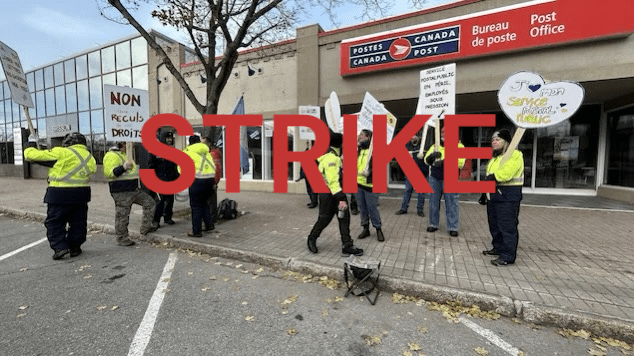GOTSMOKES.CO
- Canadian Cigarettes at Unrivaled Prices!
- Hassle-Free Shopping, and Prompt Delivery
- Comprehensive, Authentic and Competitive

Imagine waiting eagerly for a package—be it a heartfelt letter, an important document, or even a seasonal gift—only to find that your wait may extend indefinitely. For millions of Canadians, this scenario has become an unwelcome reality. A national strike by the Canadian Union of Postal Workers (CUPW) has not only halted mail deliveries across the country but has also sparked a broader conversation about workers’ rights, technological evolution, and the future of mail delivery. What’s really going on, and how might this affect Canadians now and in the future? Let’s unpack the story.
The nationwide strike, declared on November 15, 2024, by the Canadian Union of Postal Workers (CUPW), is far from just another labor dispute. At its core, the strike stems from unresolved negotiations between CUPW and Canada Post over critical issues such as pay equity, working conditions, and benefits. Despite weeks of back-and-forth discussions, both parties have failed to find common ground.
This strike not only affects letters and parcels but also vital services like the delivery of medications and government cheques. With no clear resolution in sight, the strike has left Canadians wondering: how did we get here?
At the heart of the strike are longstanding grievances from postal workers. Here’s a breakdown of the core issues:
Postal workers argue that their demands are not just about personal gain—they believe fair compensation and better working conditions are essential for maintaining a reliable public postal service. This strike, then, is as much about the future of the industry as it is about present-day conditions.
The consequences of the Canada Post strike extend beyond delayed Amazon packages. Consider these real-world implications:
Every Canadian, in one way or another, feels the effects of this strike, underscoring the vital role Canada Post plays in everyday life.
The strike has reignited debates about the future of Canada Post in a digital-first world. With email, instant messaging, and private couriers dominating the landscape, can the postal service remain relevant?
Canada Post faces a delicate balancing act—evolving with the times while preserving its workforce and accessibility.
Labor disputes like this often come down to compromise, but who will blink first? The path forward may involve:
History shows that strong labor agreements can lead to innovation and sustainability in public services. Could this be a turning point for Canada Post?
The Canada Post strike is more than a disruption in mail delivery—it’s a battle over the values we hold for public services, workers’ rights, and adaptability in a changing world. While Canadians grapple with delays, the strike serves as a stark reminder of the human effort behind every letter and package. The resolution will shape not only the future of Canada Post but also the expectations of a nation for equitable, efficient, and reliable service.
As the strike continues, Canadians are left with a pressing question: will this challenge pave the way for a stronger postal system, or mark the beginning of its decline?